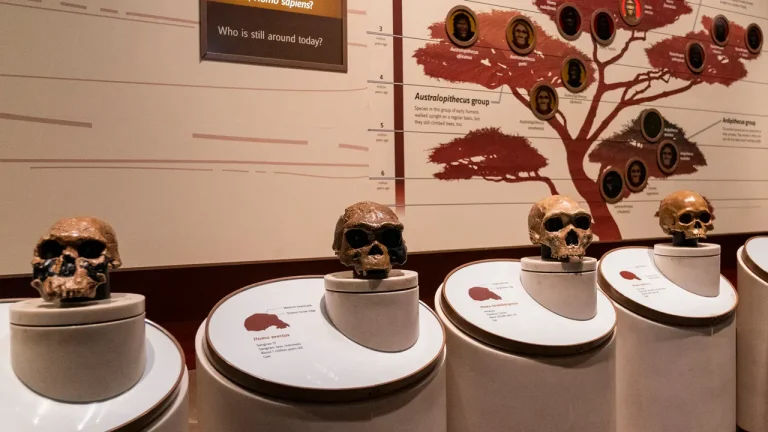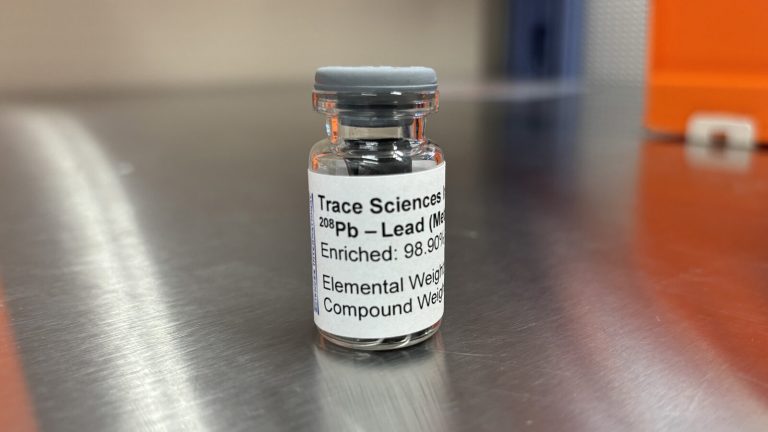
Neutrinos are some of the most abundant particles in the universe, and they are everywhere. Every second, more than 6 trillion neutrinos cruise in between the molecules of water and caffeine in your morning cup of coffee. Most of these are from the sun, but about 30,000 were produced during the Big Bang and are as old as the universe itself.
The only particle more ubiquitous than the neutrino is light. And yet unlike light, neutrinos are almost completely invisible not just to our eyes, but even to the most sensitive particle detectors. “Once a neutrino is produced in the sun, you need a light year of lead to stop it,” says Laura Munteanu, a CERN staff scientist. “They just keep going straight.”
Even though it is nearly impossible to stop a single neutrino, their sheer abundance means that a few every year will get caught inside a specially designed neutrino detector and initiate the creation of ghostly particle tracks.
Scientists want to study neutrinos because they carry information about the life cycle of stars and could even help explain why matter won out over antimatter in the early universe. But neutrinos’ aloofness means that there is still a lot to learn about them.
So why is such an omnipresent particle so antisocial?
For one, neutrinos are tiny in mass compared to every other known fundamental particle. “If all the other fundamental particles were skyscrapers, then neutrinos would be the size of ants, or even smaller,” Munteanu says.
Because their masses are so tiny, they are incredibly stable and will not spontaneously decay into other particles that might be visible to a particle detector. It also means that neutrinos behave a lot like massless particles of light and travel incredibly fast.
Because they are always on the move, neutrinos have a low probability of having a chat with the materials they pass through. But even if neutrinos could slow down and wave hello to other particles, there would be a much bigger problem: As far as scientists know, they can only really communicate with other particles through the weak force.
The weak force is what allows quarks—the internal components that make up protons and neutrons—to swap their identities. If an up quark inside of a proton spits out a W boson, one of the fundamental particles that carries the weak force, the up quark will transform into a down quark and release an electron and a neutrino as byproducts. This transformation flips the proton into a neutron, and is how the sun can produce helium, carbon and oxygen, starting with just hydrogen.
The quarks and electrons involved in stellar fusion also interact with each other through other forces (such as the electromagnetic force, which allows the sun to shine). But not the neutrinos. “Neutrinos are the only particles which interact solely via the weak force,” Munteanu says. “This means that they have a very low probability of interacting.”
The problem lies with the W boson. W bosons are extremely massive: about 80 times more massive than a proton. Because of their weight, interactions involving W bosons typically happen within the radius of a single proton or neutron. W bosons also require a lot of energy to produce, and so processes involving W bosons are often limited to the center of the sun (nuclear fusion) or the inside of an unstable atomic nucleus (nuclear decay).
This is lucky for us, because it means the atoms that make up our DNA, cells and bones are very unlikely to change. But it’s not good news for scientists who want to study neutrinos.
For a neutrino to interact with another particle, it essentially needs to run the nuclear fusion or nuclear decay processes in reverse. This is easier said than done.
First, a neutrino needs to get really close to a group of quarks, so close that it actually enters an atomic nucleus. But atoms are mostly empty space, and the nucleus is just a tiny speck in the center. A neutrino stumbling upon an atomic nucleus is like a person finding a lost earring at a music festival the size of Coachella.
Even in the rare case in which a neutrino does find an atomic nucleus, it might not even have enough energy to create and exchange a W boson. It would simply continue its long and lonely journey through the Earth, across the solar system, and into the darkness of interstellar space.
These limitations—the neutrino’s tiny size and the awkwardness of the W boson—mean that neutrinos rarely interact. However, all is not lost. Even with these limitations, scientists can still find (and study) neutrinos by building massive neutrino detectors and creating intense and energetic neutrino beams—the more energetic the neutrino, the more likely it will produce and exchange a W boson with an atomic nucleus.
Physicists are also developing new technologies that increases the sensitivity of their neutrino detectors so that when they do catch a neutrino, they can unlock all the secrets it holds about the formation and evolution of the universe.







